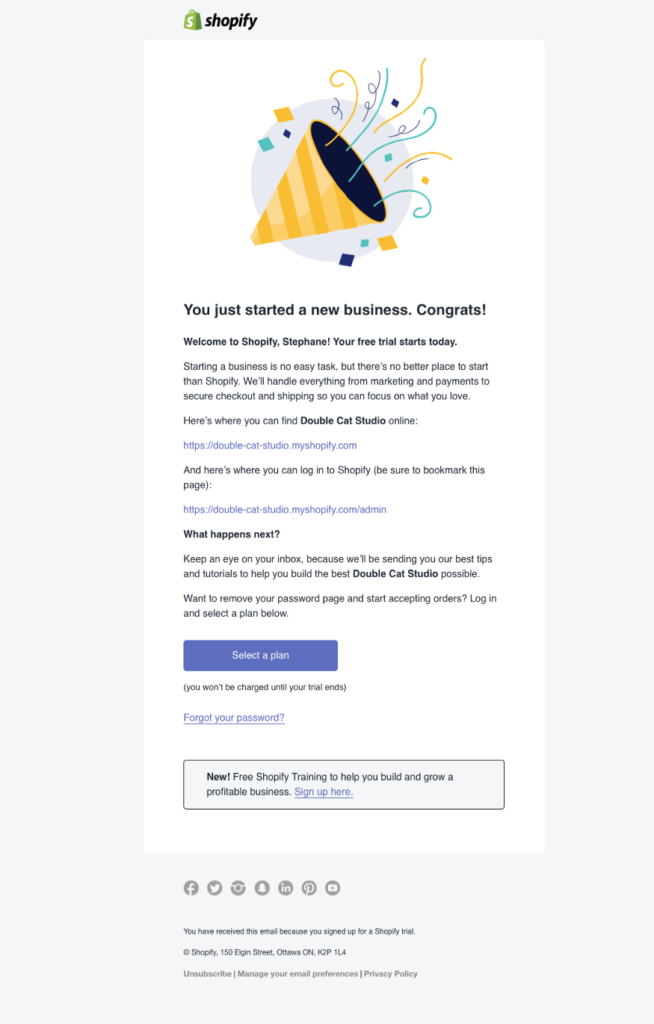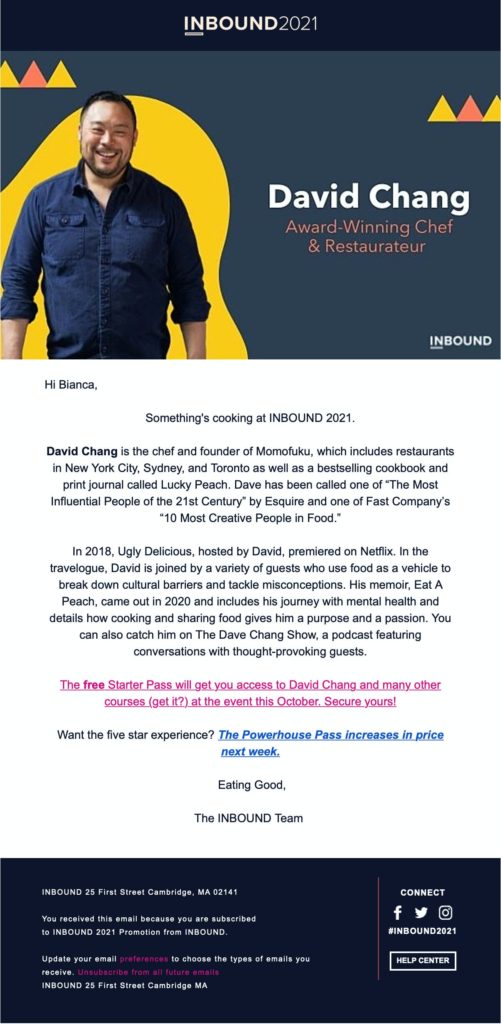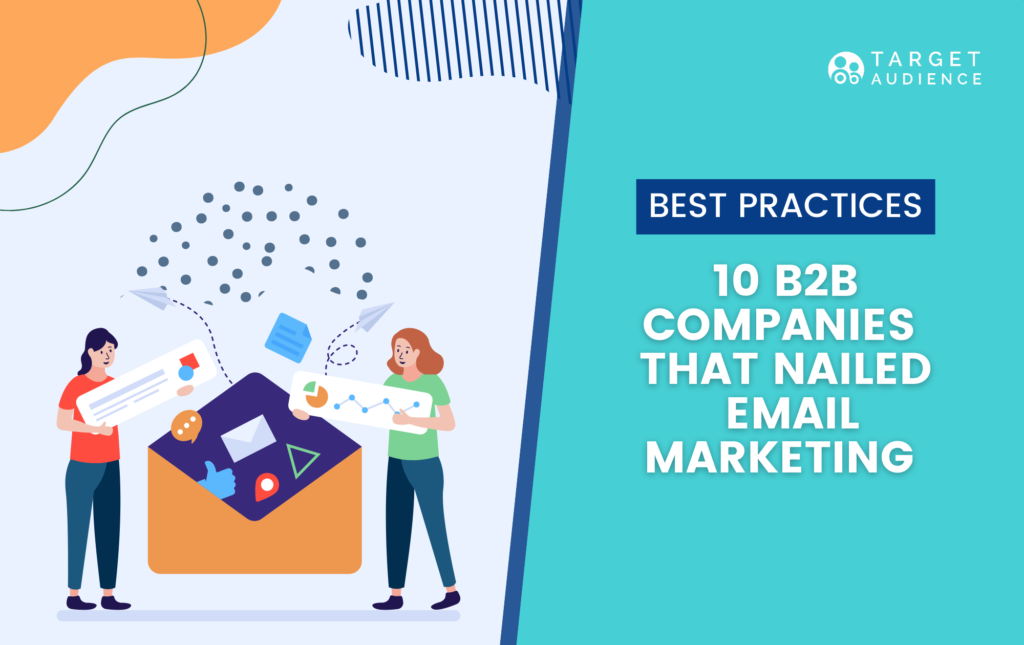Email marketing is perhaps the most effective and direct channel companies have to get in touch with their customers. Yes, social media may boast big numbers, but good old email is essential to your marketing strategy. Why is SaaS email marketing so important? According to CampaignMonitor, well-crafted emails can generate $38 in revenue for every dollar spent, making ROI as high as 3,800%.
SaaS and B2B marketers are well aware of that. Omnichannel marketing automation platforms empower B2B marketers with more significant insights into customer data, allowing them to deliver personalized, targeted and impactful SaaS email marketing campaigns. In this article, we’ll look at 10 SaaS email marketing examples that are absolutely spot on – from their design to their content.
Essential SaaS Email Marketing KPIs and Metrics
Before we get to the main event, here are a few of the most important SaaS email marketing metrics and key performance indicators (KPIs) to track when you launch an email campaign. These KPIs indicate how your email marketing strategy performs and which parts of it need tweaking. Here are the most important email marketing KPIs you need to monitor:
- Email Open Rate
Your open rate is one of the most important email marketing metrics, because it indicates on how well your email subject lines perform. According to statistics 47% of recipients will open an email solely based on the copy. Your subject line needs to be clear, compelling, and communicate the value of your offer/product at first glance. It’s always a good idea to A/B test your subject lines.
- Click-Through Rate (CTR)
Your CTR indicates how many recipients are taking action and clicking on your email links. This is another test to your email copy – is it persuasive enough to lead your subscribers to your calls-to-action (CTAs).
- Email Conversion Rate (CR)
Your email conversion rate represents how many recipients complete your desired actions. This differs depending on each SaaS email campaign’s goals. If your intention behind your email is to convince users to upgrade their version of your software, your CR indicator would be the number of recipients who did that following the email.
- Bounce Rate
Email bounce rates indicate how many email addresses in your list didn’t receive your message. There are two types of bounces:
- Soft Bounce – the email wasn’t delivered because of a temporary issue (for example, a full inbox).
- Hard Bounce – the email wasn’t delivered because of a permanent issue (email address doesn’t exist).
10 Examples of SaaS Email Marketing Done Right
SaaS marketing is challenging and unlike any other type of marketing. Accordingly, SaaS email marketing is an art form in its own right. It always helps to take inspiration from those who’ve already done it and done it well.
1. Shopify – welcome email
You don’t get a second chance at a first impression. That’s why welcome emails are so important. Building a strong base is critical for developing a long-term customer relationship. Unfortunately, many businesses lose that brilliant opportunity by sending bland welcome emails. Shopify sets a great example of what a good welcome email should look like:

By managing expectations and providing value right off the bat, Shopify is setting the ground for a lasting relationship. The email is personalized, expresses thanks to the customer for choosing Shopify, and most importantly, it sets clear expectations for the future.
Main takeaways from Shopify:
- Personalization- Even a simple personalization such as using the name of the receiver goes a long way in forming a trust bond.
- Gratitude – A single line of thanking the customer for subscribing or using your product or service is considered good email etiquette.
- Provide information and manage expectations – Shopify’s email mentions the product’s benefits and lets the customer know that they will be sending her some practical info and tips.
2. Monday.com – onboarding sequence
An onboarding email is a message a customer receives right after a subscription. It’s essentially a guide on how to use the product and is inseparable from a good onboarding process. The main goal of an onboarding email is to decrease any friction a new user may face the first time they try to navigate the software.
Often, onboarding is combined with the welcome email. But that’s not necessarily the best route. Studies show that sending a series of onboarding emails yields 51% more revenue than a single welcome email. This is exactly what Monday.com did, and their onboarding sequence is one of the best ones we’ve seen.

Here’s why it works:
- Crisp copy – a lengthy ‘how to’ guide can be overwhelming. Monday.com kept the written copy on their email short and to the point.
- Video tutorial – The real technical explanations are presented in a video. Video tutorials are not only engaging but also very easy to follow and understand.
- Hyperlinks – adding hyperlinks to the mobile or web app in an onboarding email makes them accessible to the custom rand can increase the conversion rate.
3. Litmus – promotional emails
You would expect an email marketing platform to offer exceptional marketing emails, and Litmus does not disappoint. The design helps separate this email from the dozen other promotional emails in the recipient’s inbox, namely the use of animation. Note that The animation is eye-catching yet subtle enough not to distract from the rest of the content.
The swipe motion used to give customers a look “under the hood” of their emails makes the headline come alive. The combination of the two does an excellent job of stating exactly what this email is about.

Main takeaways from Litmus:
- Visuals matter. Put thought into the design of your emails because it just might be what draws the recipient to engage with your content.
- Contrast is key, to allow readers to quickly scan your email. Important elements, like your CTA, should stand out from the rest of your email.
- Separating sections with white space allows the reader to understand where one element ends and the next begins. This help communicate your message in an organized and attractive way.
4. Basecamp – end of a free trial
After a customer’s free trial period ends, it’s important not to lose momentum and send them a nurturing email showing their current options. Basecamp, a project management software, sets a great example of an effective email strategy through the nurturing email they send at the end of a customer’s free trial period.

This email focuses on 2 things: creating trust within the customers and clearing any confusion they may have. These two aspects immensely impact whether a prospective customer converts into a paying customer.
The main facts you need to know are clearly stated – the trial stage, the actions that need to be taken, and what will happen to your work. Underneath the CTA button, there is a clear explanation of how you can pay for the software and reassurance that the subscription can be canceled anytime at the click of a button. Lastly, there is a link provided in case something is unclear and you want to contact customer service.
Main takeaways from Basecamp’s SaaS email marketing strategy:
- Nurture prospective customers.
- Explain the benefits of a paid subscription.
- Explain how the subscription process works and highlight how simple it is.
- Reassure prospective customers that their data is safe.
5. Squarespace – trial extension emails
Sometimes, businesses offer extensions of trials to allow prospects more time to warm up to their software and make up their mind. This is something that certainly needs to be communicated through emails. Website building tool Squarespace is an example for a company that makes use of this SaaS email marketing strategy and nails the email too.

The structure is similar to that of the previous email we analyzed. At the beginning of the email, the recipient is notified that their free trial has expired. However, it is then followed by the acknowledgment that everyone gets busy and an offer to extend the trial by 7 days. This empathetic choice of words conveys that Squarespace understands their customers are human beings (something that promotional asks often lack) and that they care about them. The fact that all it takes to extend is one simple click is helpful too.
Main takeaways from Squarespace:
- Be understanding of your customers’ pain points and offer a solution.
- Make your copy and CTA as simple and straightforward as possible.
- Provide a quick and simple explanation of the benefits of upgrading.
6. HubSpot – online event invitation
Hosting virtual events like webinars comes with plenty of benefits – brand awareness, authority building, and audience engagement. However, achieving those goals is only possible if you generate enough excitement for people to show up. A compelling webinar invitation is crucial for getting people to sign up for the event.
Inbound 2021 was an online event hosted by Hubspot; their email invitation is a brilliant example of how to do it effectively.

The email is personalized, the copy is conversational and witty, and it clearly addresses the practical info (what, when, and who is it for). HubSpot also uses the good old Fear of Missing Out (FOMO) by presenting one of the event’s lucrative speakers, his background, and the valuable insights you can get by attending the event. Lastly, the CTA copy makes excellent use of humor.
Main takeaways from HubSpot:
- Focus on attendee benefits – what’s in it for them? Why should they take time off their day to participate?
- Show off your speaker panel – everyone wants to learn from the pros.
- Personalize your email.
- Trigger FOMO—Live events happen once, and you can’t revisit them later. You can trigger FOMO through copy (use words like ‘exclusive,’ ‘rare,’ etc.) or create a sense of urgency (share the last date to sign up or mention that spaces are filling up quickly).
7. Canva – customer retention emails
People like to be recognized for their achievements. Canva, an online graphic design platform, utilized that insight in its SaaS email marketing campaign. In the exemplary promotional email below, Canva celebrates the user’s current feat (completing 10 designs), shows their past milestones, and highlights the next milestone for motivation.
Another reason it’s a great SaaS email marketing example is that the primary CTA invites the recipient to share their achievements on social media. This can expose a broader audience to Canva’s platform and inspire existing users to engage with it and create more designs.

Celebrating landmarks and rewarding users for them the way Canva does shows your customers that you appreciate their ongoing usage of your software. Moreover, providing a new goal or an incentive encourages them to continue using it.
Main takeaways from Canva:
- Note and reward your customers’ milestones and achievements.
- Create future goals to motivate them to keep using your platform.
- Try to include social media in your CTA to create engagement among your followers and reach new audiences.
8. Chanty – emails that activate inactive users
Every business has subscribers that mostly remain inactive. Do NOT ignore those users. Instead of giving up on them, you can run a targeted email marketing campaign to encourage those contacts to return to your product. Here’s a stellar example from team collaboration tool Chanty:

They remind the recipient of the benefits they get from using Chanty and provide easy access to the platform through a CTA button.
Main takeaways from Chanty:
- Nurture your audience – Do not abandon users. They may be inactive now, but you have their email address, and this means that they were interested in you at some point. If you nurture them the right way, they may become active again.
- Use segmentation – Not all your customers are the same. Different users require different approaches, therefore one of the most important elements of a good email strategy is segmentation. Create a ‘low engagement users category and communicate with them accordingly.
9. Userpilot and Zoho – feedback emails
Attaining new customers is great, but you have to retain them, too. The best way to ensure customers stick around is to give them the best possible customer experience (CX). The best way to improve CX is to get direct feedback on your SaaS product from the customers. What do they like about it? What improvements would they like to see?

Another added benefit of asking for feedback is that it helps businesses categorize their users into passives, detractors, and promoters. As we discussed above, every one of those groups is important. While promoters are your most loyal customers who can help you upsell, the other two groups help you find blind spots in your product. The aim is to turn your detractors and passives into promoters.

As seen in these examples by Zoho and Userpilot, the key elements of an email asking for feedback are:
- Encourage the customers to take action – Offer small incentives to encourage users to take the action required by the company, whether it’s filling out a survey or referring a friend to your product.
- Reaffirm the value that the business brings to the customers.
10. Zapier – updates/digest emails
Digest emails serve as a way of keeping customers informed of company or product news or updates. Many businesses use this strategy to stay in touch with their customers regularly and to notify investors and employees of the company’s achievements and news.
Making your subscribers feel like they’re in the loop lets them know you care about them. In this example from Zapier, we can see the email is personalized, and the recipient can read each segment in detail through a clickable button in the email.

- Divide the information into primary and secondary.
- Ley readers choose which bit they’d like to read in detail rather than overwhelming them with information.
- Use enough white space to give breathing room between the elements of the email.
Final Thoughts
Having a SaaS email marketing strategy in place is a non-negotiable for any company, and that includes SaaS businesses. What’s important to understand is that it is not one size fits all. Yes, there are best practices you could learn, and of course, take inspiration from those who do it well.
Keep testing your emails, subject lines, and overall engagement. It will take some iterations until you figure out the right fit for you. But once there, it will create a solid and lasting value for your brand.



